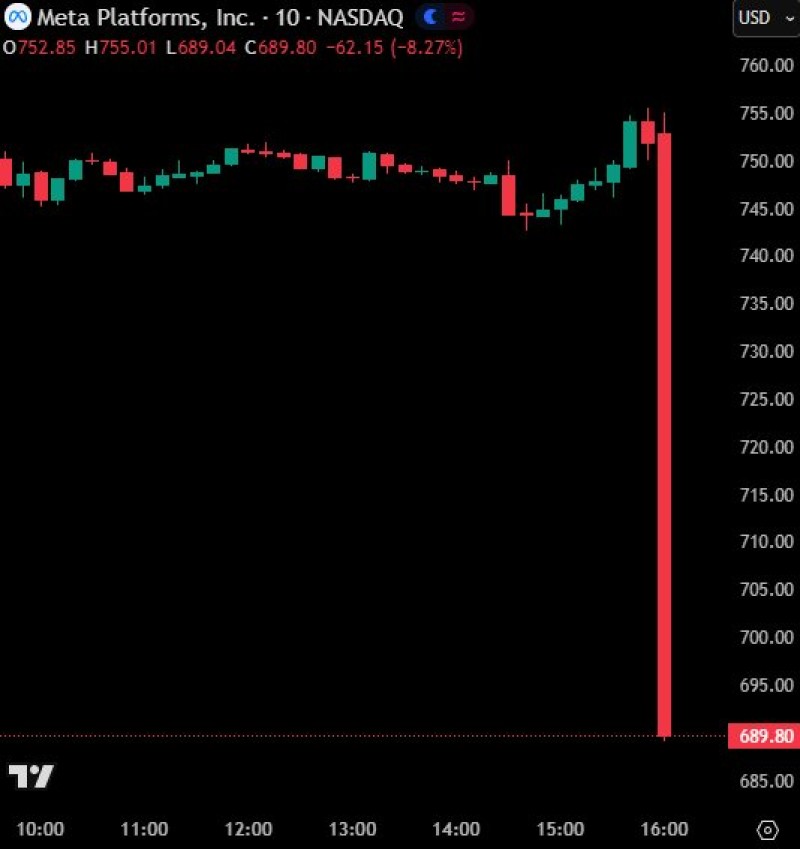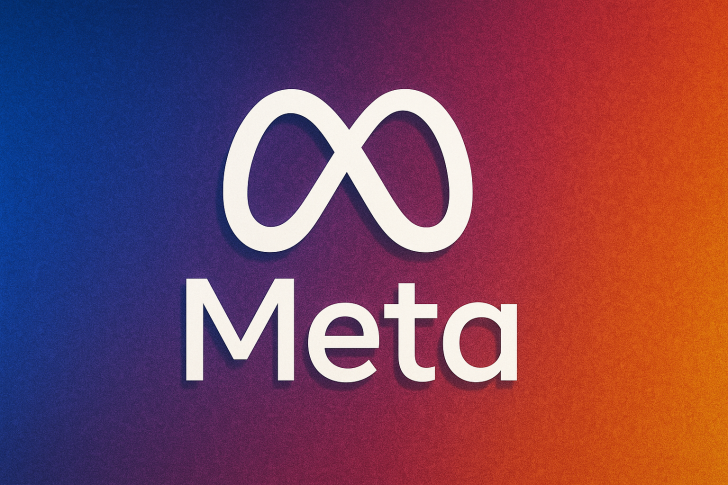Meta Platforms ($META) sent shockwaves through Wall Street when its stock nosedived more than 8% within minutes of releasing Q3 earnings on October 29, 2025. Despite strong revenue growth in advertising and AI, a surprise $15.9 billion one-time charge wiped out investor confidence almost instantly.
What Happened: From Stable to Free Fall
The sudden collapse, first flagged by The Kobeissi Letter, shows just how quickly even mega-cap tech stocks can shed billions in market value when unexpected costs hit the books.

Before the earnings drop, Meta was trading comfortably between $745 and $755 with minimal volatility. Then came the report—and everything changed. A massive red candle appeared on the 10-minute chart as the stock plunged from $755 to $689.80, an 8.27% intraday crash. Institutional traders rushed for the exits, creating a classic panic-selling pattern that erased days of gains in mere minutes.
Key Technical Levels:
- Resistance: $755 (pre-earnings high and breakdown point)
- Support: $685–$690 (new intraday floor where selling paused)
- Pattern: High-volume capitulation candle signaling bearish reversal
The Numbers Behind the Drop
Meta's Q3 performance was actually pretty solid—revenue climbed about 12% year-over-year, fueled by Instagram Reels, AI-powered ads, and Reality Labs. But none of that mattered once the $15.9 billion expense showed up. The charge, likely tied to legal settlements and restructuring, crushed earnings per share and sent them below estimates. Management called it a one-time hit, but investors weren't buying it. The worry? More surprise costs could be lurking down the road.
Meta's sell-off rippled across the tech sector, dragging down stocks like Alphabet and Snap in after-hours trading. Investors are clearly getting pickier about big-tech spending, especially as AI infrastructure and metaverse investments keep piling up. The $690 support level is now crucial—if it holds, we could see a bounce toward $720–$730. But if it breaks, the next stop might be $650, a level last seen in early 2025.
For now, the stock looks oversold, which usually means volatility ahead. Whether that turns into a recovery or another leg down depends on how well Meta can rebuild trust around its spending and profitability story.
 Peter Smith
Peter Smith

 Peter Smith
Peter Smith


